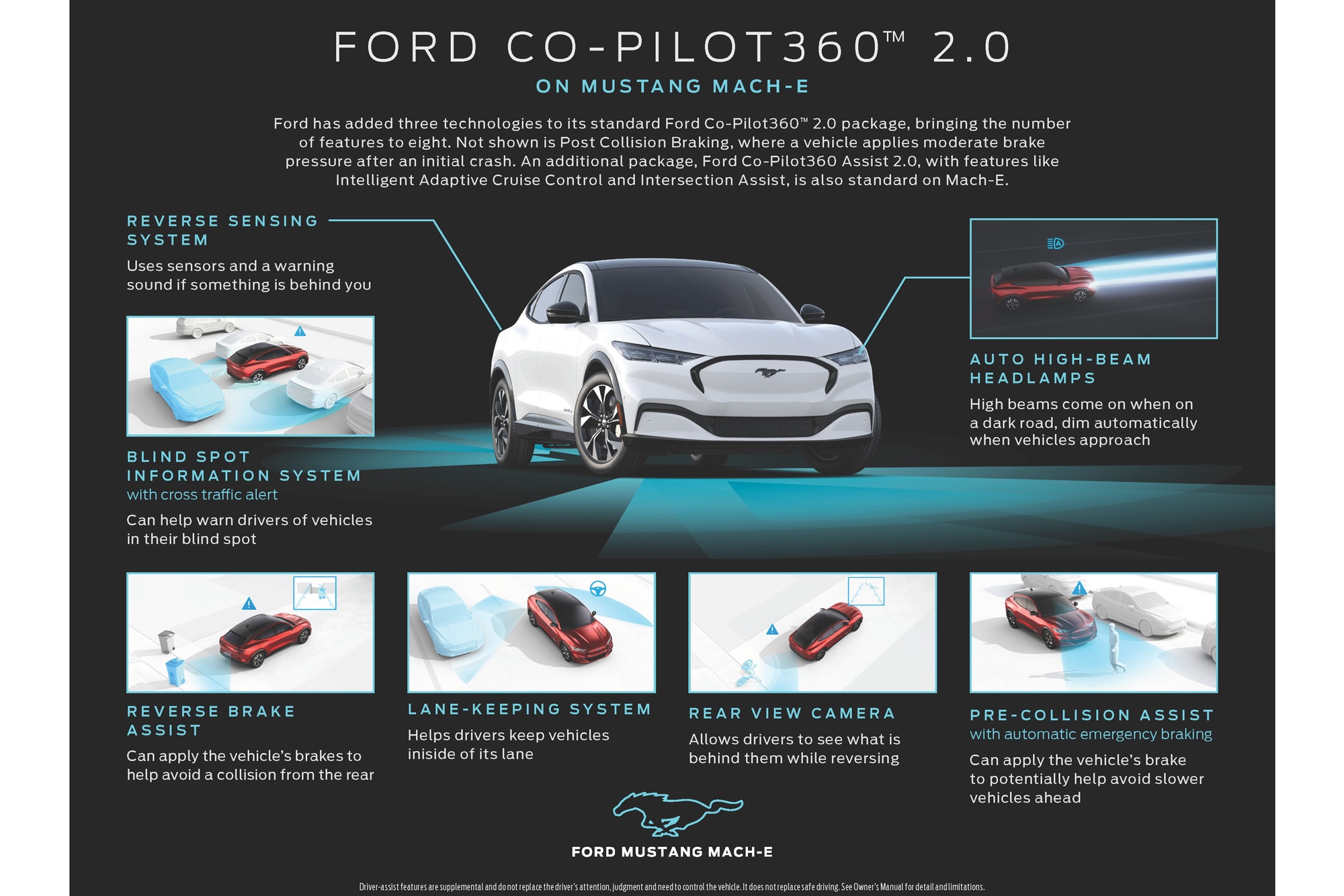When Will Driver Assistance Technology Reach Critical Mass?
High-tech features look to avoid car crashes entirely.
 Ford
Ford
As the roads become ever more crowded with vehicles, there has been a push to build safer vehicles. For decades, that meant reactive technologies keeping passengers safe in a collision. Now automakers are using active measures to avoid impacts.
Technologies can now warn a driver they are about to collide with other vehicles, pedestrians, and cyclists. These systems can automatically apply the brakes in emergencies and help keep a vehicle in its lane.
Safety in Numbers
While no safety system is 100% foolproof, if automakers were to make some of the more advanced systems standard on all vehicles’ the likelihood is high there would be fewer collisions and injuries.
For example, if all vehicles had automatic emergency braking (AEB), the reduction in rear-end strikes would be huge. According to research from the Insurance Institute for Highway Safety (IIHS), AEB reduces the chances of running into the back of another vehicle by 43%, while adding forward collision warning (FCW) would reduce accidents by 50% and using FCW alone reduces accidents by 27%.
Lane Departure Warning (LDW) and Lane-Keeping Assist (LKA) are also capable of reducing impacts, including the most common collision, a head-on collision. According to research, LDW can reduce impacts by 3%, while LKA posts a more impressive 60% reduction.
As for pedestrians, a 2017 National Highway Traffic Safety Administration (NHTSA) study found that PCAM (Pedestrian Crash Avoidance Mitigation) systems such as AEB on all vehicles could reduce up to almost 5,000 annual vehicle-pedestrian crashes and 810 fatal vehicle-pedestrian crashes.
Regulatory Change on the Horizon
Like seats belts, airbags, and backup cameras, there’s likely a time when regulations will require certain advanced safety features to become part of standard new car equipment. Even sooner, when enough automakers voluntarily include advanced safety features, others will be forced to follow suit to remain competitive.
While we wait for that to happen though, the NHTSA has recommended the addition of lane-keeping support, automatic emergency braking with pedestrian detection, blind-spot detection, and blind spot intervention to the agency’s 5-Star Safety ratings program.
More about Safety than Convenience
Advanced safety features are available right now in vehicles. While automakers continue to promise systems allowing the vehicle to drive itself under certain conditions some time in the future, a regular consumer cannot buy a self-driving car, no matter how much hype there is around that technology.
Advanced safety technologies are real and are available in vehicles right now. The only issue is that they’re not standard on all vehicles. It comes down to cost. Adding radar sensors and cameras to vehicles and developing software for those pieces of hardware costs money. Typically, the less expensive a vehicle is, the less likely it has things like emergency braking and lane-keeping assistance.
Car makers have been extending some of these safety features to their entire lineups as standard equipment. For example, the Ford Co-Pilot 360 suite is standard on all vehicles with automatic emergency braking with pedestrian detection.
If Ford can add that to its $20,000-plus Maverick pickup, there’s hope others will follow suit. We’ll all be safer on the road.
Written by humans.
Edited by humans.
 Roberto Baldwin
Roberto BaldwinRoberto Baldwin is an automotive and technology reporter based in Northern California. In addition to traditional car coverage, he has focused on the emergence of electric vehicles and driver assistance features in vehicles and the eventual launch of autonomous vehicles. Over the past seven years he’s sat in more autonomous test vehicles than he can remember but still reminds the average driver to keep their eyes on the road. He currently owns a Subaru BRZ, Hyundai Kona Electric, and a Vespa GTS 250.
Related articles
View more related articles